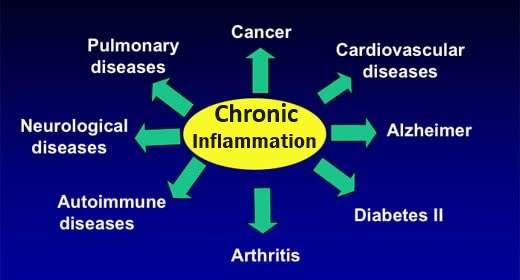GSE
Atherosclerosis occurs as a result of damage to an ascorbate-deficient blood vessel wall
Atherosclerosis occurs consequential to injury of a weakened
arterial wall
Weak, ascorbate -deficient,
vessel walls are more easily damaged by injurious mechanisms
Ascorbate deficiency
is the primary cause of a weakened wallVitamin C (together
with the amino acids lysine and proline), maintain arterial
structural integrity by their role in forming connective tissue components collagen
and elastin. Arteries (and every other body tissue) constantly
undergo decay, repair, and replacement. Tissue repair and replacement requires a
binding protein called collagen, which the body produces using
vitamin C (ascorbate).
An insufficiency of ascorbate will cause artery
walls to form lesions (wounds) as they fall into disrepair.
A chronic deficiency of
vitamin C leads to chronic scurvy.
Eventually the lesions would rupture and you would bleed to death through
the arterial wall.
Weak Walls
(Due to chronic scurvy)
CVD (related to atherosclerosis) - A Simple Cure
Uric acid is also reported to be a possible substitute
for Vitamin C .
Primates
have higher levels of uric acid compared to
other animals antioxidant , this is
possibly another substitute mechanism for primates' lower
ascorbate levels
Ames BN et al (1981) Proceedings of the National
Academy of Sciences USA
Various mechanisms can injure the weakened arterial
wall
(a) Mechanical stress.
Usually in a location under high pressure or turbulence;
(b)
A lack of
antioxidants
to control
oxidative stress
(especially in the presence of heavy metals). Triggered
by oxidative stressors often present ; Basically the
oxidant molecules in your body
are outnumbering the antioxidants ;
highly reactive oxidant oxidants :), cigarette smoking,
emotional stress, microbial infection, and in a variety of conditions E.g.hypertension,
immune injury, and diabetes.
(c) Other causes:
What injures arterial
lining?
Endothelial cells (ECs) function as a barrier.
ECs prevent toxic substances in the blood from entering the
elastic smooth muscle in the middle of the vessel wall.
Chronic injury irritates /inflames the endothelium causing
the ECs to initiate an inflammatory immune response for the purpose of healing or
controlling the damage. This involves a complicated series
of steps, including T-cell activation, foam-cell formation, smooth muscle migration,
and blood platelet adherence and aggregation, for the purpose of depositing an artery-thickening
plaque over the damaged area to prevent a person from bleeding to death through
a weakened arterial wall (usually under high pressure). This process is called atherosclerosis.
For more details on the development of atherosclerosis:
Atherosclerosis Process - Overview
Atherosclerosis Process - In Detail
Plaque in your arteries is Saving your Life!
Renowned researchers Drs.Matthias Rath M.D. and two-time Nobel prize winner
Linus PaulingPh.D., point out that the deposition of plaque at least allows time
for the person to reproduce before his or her eventual death caused by narrowed
arteries.
DO NOT REMOVE ATHEROSCLEROTIC
PLAQUE UNTIL YOU HAVE DEALT WITH THE CAUSE OF DAMAGE AND STRENGTHENED YOUR ARTERIES
Using cholesterol-lowering drugs (or any other mechanism) to remove cholesterol
content from arterial plaque before rebuilding the arterial walls is acting against
your body's own survival tactic. If you are not getting enough
vitamin C to produce
sufficient collagen to maintain the integrity of your arteries, then the atherosclerotic
plaque (partly composed of LDL cholesterol) is saving your life! Lowering
cholesterol will somewhat reduce plaque build-up, but simply removing plaque without
first restoring the artery to health is like tearing a scab off a wound vitamin C to heal and
strengthen your arteries.
Dr. Linus Pauling, Phd. (1901- 1994)
- is one of only two people to receive more than
one Nobel Prize, the other is Madame Curie, and he is the only person
to receive them unshared. Pauling was one of the first scientists to
work in the fields of quantum chemistry, molecular biology and orthomolecular
medicine. In this article, he is especially referenced for his
work on the involvement of
vitamin C
and the amino acid L-lysine in heart disease.
Fix the wall / Prevent the injuries
Chronic inflammation of the endothelial cells (ECs) lining
the arterial wall is caused by nutrient deficiencies and lifestyle choices.
NOT by elevated cholesterol and calcium, whose deposits in the arteries are
secondary to the primary causes.
Tools Against CVD
Progression Rate in CVD
Atherosclerosis can sometimes progress unnoticed
for decades - until its first symptoms and signs appear in the advanced
stage, often announcing itself as a "sudden" heart attack.Ultrasound studies demonstrate
coronary atherosclerosis exists in 37% of "healthy"heart donors aged
20-29, 60% of those 30-39, and in 85% of those older than 50.
77% of 300 American soldiers killed in Korea, average age 22 years,
had gross evidence of arteriosclerosis
Enos WF et al, Coronary disease among United States soldiers killed
I action in Korea. J Amer Med Assoc, 1953.
Similar findings were reported in American college students, who
died in auto accidents
Atherosclerosis can also develop erratically and
rapidly. Records
involving the photographing of arteries (called arteriography or angiography) as
plaque develops in patients showing CVD symptoms, clearly demonstrate that development
can also be erratic and develop rapidly in just a few months. A university hospital
study in Germany compared slow and rapid atherosclerosis progression in 79 patients
with CHD using angiography.
- Results indicated
that rapid progression was NOT determined by: Age differences,
sex, number of vessels diseased, interval between angiographies, smoking, having
hypertension or diabetes mellitus, or on serum concentrations of LDL cholesterol,
HDL cholesterol, triglycerides, and/or Apo B.
However, it was found that elevated Lipoprotein(a) levels
are a clear risk factor for the rapid angiographic progression of coronary heart
disease (CHD). The link between Lp(a) and rapid progression may
be the effect Lp(a) has in preventing blood clot dissolution. As typically observed,
average Lp(a) concentrations in all patients were higher than in healthy subjects.
(Note: The angiographic picture of progressive narrowing may have included the accelerated
proliferation of vascular wall cells).
Wolfram Terres, MD et al, Rapid Angiographic Progression
of Coronary Artery Disease in Patients With Elevated Lipoprotein(a),Circulation
(AHA),1995
Lp(a) -"The Repair Man"

